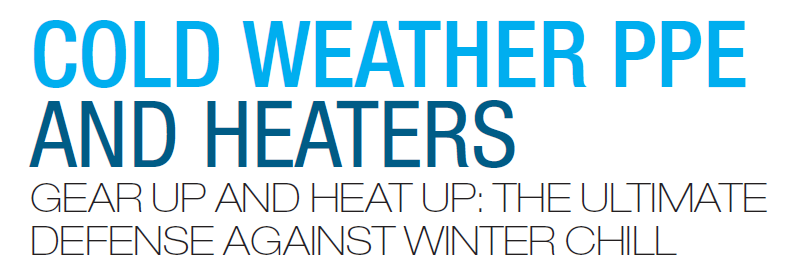 |
It’s a toss-up whether the bitter cold temperatures of winter or the hazards of working in the hot summer heat are worse. PPE manufacturers continue to keep everyone safe in either environment. For this issue, facing the chill of winter, we focus on the latest trends and innovations in cold weather PPE and heaters.
 |
| The SunFire SF120 radiant heater offers the best of both worlds in heating power and portability. It is ideal for a shop, warehouse, or jobsite. |
SUNFIRE
Although the U.S. based SunFire has seen exponential growth over the past few years, the warmer than normal winters the past few years have left the heater market somewhat stationary.
However, Michael Perleberg, national sales manager, noted that any amount of frigid weather throughout the country can change sales numbers rapidly.
“With the election now behind us, we anticipate the construction market to strengthen and the willingness of commercial buyers to invest in equipment and give a likely boost in sales to the heater market for 2025,” he said.
In the portable sector of construction- related heaters, Perleberg said they are seeing a trend towards radiant heaters for specific applications.
“For concrete and drywall applications, there are drawbacks to using forced air heaters that can cause cracking from the rapid drying of the top layer,” he said. “Therefore, many contractors are moving towards the benefits of radiant heating that offers a more natural warming experience like the sun. This opens opportunities for contractors to pour concrete and install drywall in colder weather.”
Looking ahead, Perleberg said SunFire is always looking to future opportunities, technology, and product enhancements to benefit the consumer.
“We have a great R&D department working on various new options and technologies which we plan to release in the next several years,” he said.
MECHANIX WEAR
“We expect the industrial and construction sectors to see sustained growth of around 3% in 2025, driven by continued momentum in infrastructure, utilities, food and beverage, and aerospace,” says Ryan Dolton, vice president commercial sales at Mechanix Wear.
Driven primarily by the stablilization of the post COVID-19 volatile price environment, there has been a tremendous amount of competitive quoting of existing business. During the pandemic, both manufacturers and distributors experienced significant cost pressures in materials, operations, and transportation.
“The inflationary environment has stabilized, but costs haven’t necessarily declined, either,” Dolton notes. “This leads to some end users pushing to renegotiate some of the costs that were passed on.”
He says Mechanix Wear uses a rigorous process to couple its products to specific applications while allowing for temporary price concessions for users and other value adds like post-sale service.
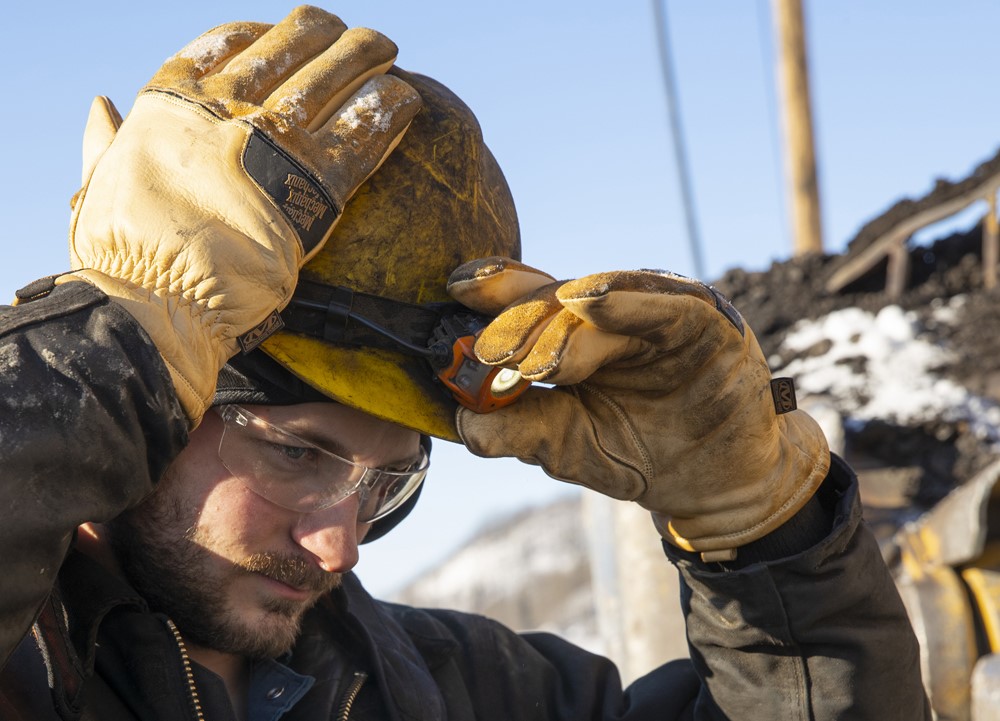 |
| Mechanix Wear offers a full suite of PPE solutions for the professional user including hand protection, high-hazard protective apparel, and eye protection. |
“Mechanix Wear’s focus on premium performance products means our offerings are ‘stickier’ once integrated, giving our partners consistent value in both safety and long-term cost savings,” Dolton adds. “Competing for incremental new business has required us to be flexible in our approach.”
“Mechanix Wear is watching these trends closely to ensure our offerings meet the evolving needs of our customers without compromising on safety or quality,” he says, noting that the company will continue to integrate its hand protection, high-hazard protective apparel, and eye protection businesses to create a suite of PPE solutions for the professional user.
“Our upcoming refresh to our signature cut and sewn hand protection line combines cutting-edge materials with best-in-class design, fit, and comfort, strengthening our commitment to the professionals who rely on our gear every day,” Dolton says.
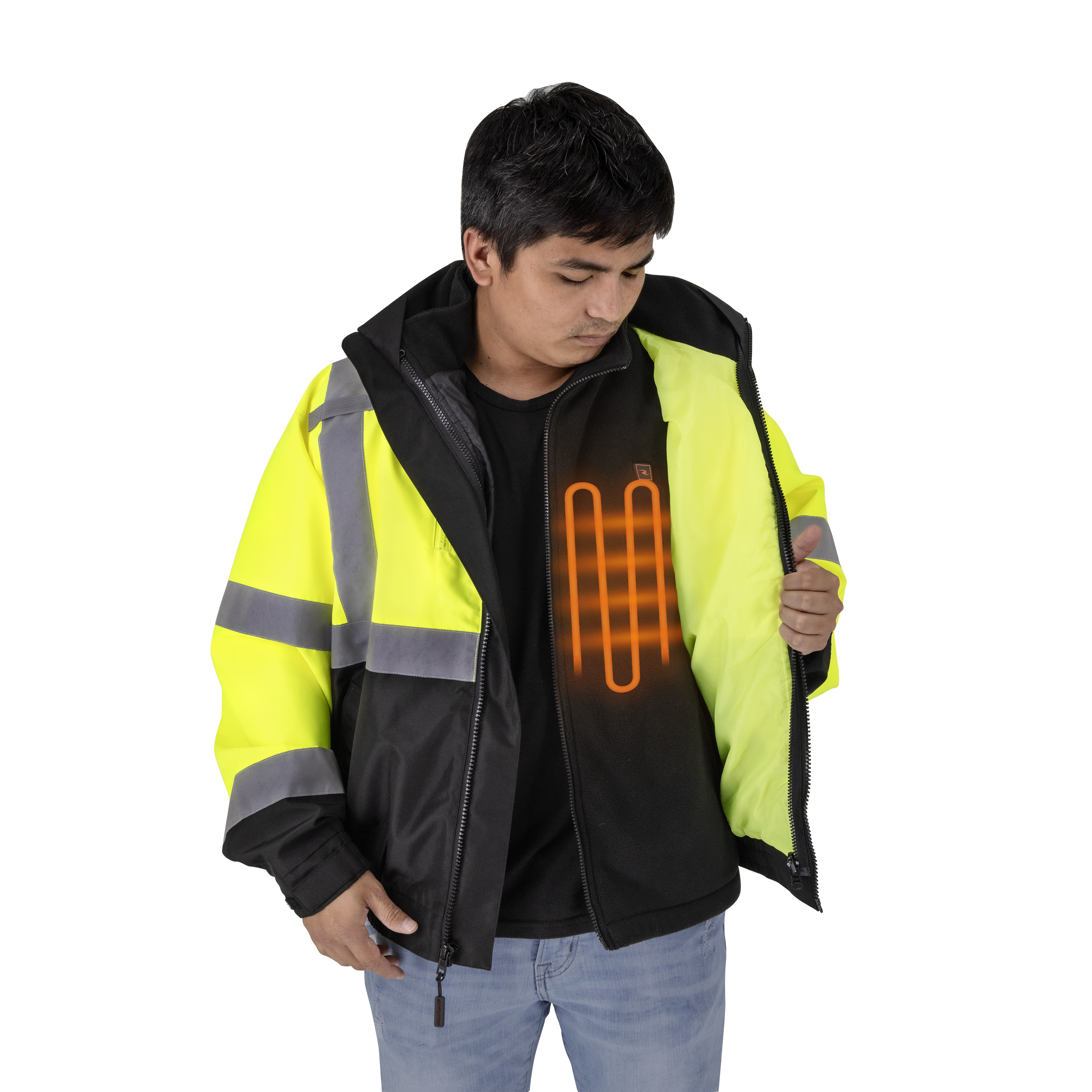 |
| Demand is high for cold weather PPE that not only makes you visible but keeps you warm, such as this Radians heated jacket. |
RADIANS
Within construction, which is expected to see moderate growth continue through 2025, there is a rise in demand for garments that combine multiple functions such as visibility, insulation and adaptability to different temperatures.
Nicole Novick, Radians product manager, says heated gear, for instance, is gaining traction as employers look to provide tradespeople with clothing that not only keeps them visible but also provides warmth in colder conditions.
“These multi-functional garments are designed to be versatile, usable across different seasons, which reduces the need for multiple items of clothing,” she notes. “This shift reflects an understanding that comfortable, well-fitting gear that can be used in multiple seasons promotes consistent use, leading to safer work environments.”
These trends are reflected by increased emphasis by OSHA and contractors on worker safety, comfort and productivity.
Novick anticipates that there will continue to be technological advancements in heating methods going forward.
“The batteries will have multiple uses, continue to be easy to carry, easy to charge, and wearability should increase,” she says. Battery life will continue to grow as the batteries become lower profile and more lightweight.
Also, fabric and material innovations will continue to expand, including materials that reflect warmth back to the body. Novick suggests that customizable heat is being marketed as well.
As for Radians, Novick says the company will continue to expand its winter wear and heated gear items.
“We have lots of things up our heated sleeves,” she says.
 |
| Dovetail Workwear takes the hassle out of winter bathroom breaks and eliminates the need to take everything off with these drop seat overalls in black stretch thermal denim. |
DOVETAIL WORKWEAR
Sara DeLuca co-founder and vice president of product at Dovetail Workwear has an overall positive outlook going into 2025.
“Both uniform and workwear distributors are taking women’s fit seriously,” she said. “Policy around PPE has begun to mandate that fit specific to gender must be considered for safety.”
Generally, more brands are providing and building products specifically for women than ever before.
“Women’s participation in construction industries is growing, which is one of the reasons having properly fitting and performing gear is gaining attention,” DeLuca said. “Many companies are also realizing that in order to attract and retain younger workers they need to provide them uniform options that are appealing.”
She notes that European and Japanese workwear brands have long made workwear and uniforms with lifestyle in mind and that is starting to gain a foothold in the U.S.
“Companies seeking to build and attract a diverse workforce recognize that providing better workwear options, especially for women, is an effective way to start,” she said.
However, finding properly fitted sizes in extended sizing is challenging with many plus-sized women still only finding men’s options available.
“In categories such as flame-resistant (FR) workwear, there is still a significant lack of women’s options and sizes,” she said. Smaller brands building better women’s workwear products are getting the attention of the larger companies. Whether it’s better flame-resistant underlayers for women or better fitting, more versatile safety work boots, the smaller companies are causing a shift industry-wide.
DeLuca says Dovetail will continue to build on its workwear designed for women in the trades and bring the brand’s focus on fit and quality into expanded flame-resistant offerings.
“Using zonal reinforcements, we’ll continue to enhance the performance and durability of our workwear,” she says. “We’ll continue to listen to what women want in their workwear to enhance their performance and confidence on the worksite, like a drop seat in overalls, or elastic insets in maternity wear. And we’ll continue to do what we are famous for: making the best workwear fit for women, using innovative fabrics that blend durability with comfort and performance no matter what the working conditions.”
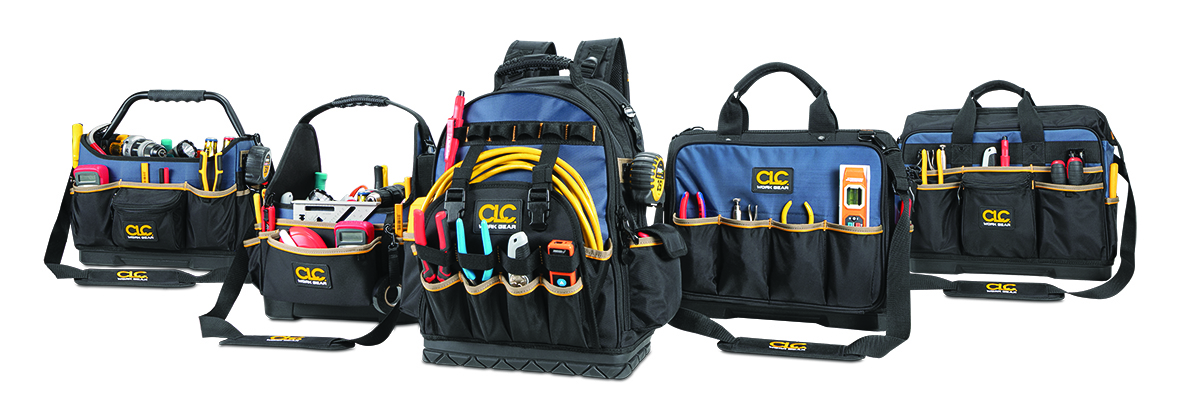 |
| Cold weather or otherwise, when it comes to workwear, the Hultafors Group is focused on function, quality and style. |
HULTAFORS GROUP
Function plus style is the ongoing trend for workwear, cold weather or otherwise.
“Every day our products deliver durability, ruggedness and function for the pros on the go, and we are being asked by our end users to introduce new colors, styles and materials,” says John Mort, vice president marketing and product development, Hultafors Group North America. “Being a part of Hultafors Group it’s all about ‘Improving How the World Works,’ and our goal is to create resilient, safe, and high-performance solutions for professionals that leave a minimal impact on the planet.”
He says the contractors are counting on them to continue to advance in this space while upping the game in function, quality and style.
“While much is happening in the market and certainly many companies have identified headwinds, we believe that with the investments we have made in new product development along with our business partnerships will be able to continue to drive increases in the market for 2025,” Mort say, noting that use of new sustainable materials, mixed materials, colors, functionality and continuing to develop products that support safety are key for their professional customers.
DENIOS-US
The outlook for cold weather gear and heating solutions in 2025 is promising, fueled by growth across numerous industries.
“The demand for heating solutions, particularly heating boxes for drums and intermediate bulk containers (IBCs), is on the rise as more businesses recognize the importance of temperature control in protecting valuable materials and ensuring process efficiency,” says Diego Rodriguez, president of DENIOS–US.
Current projections show growth in the food and beverage and pharmaceutical markets at rates of 4% to 5% through 2030.
Rodriguez says as markets expand, so does the need for advanced thermal management to maintain product integrity and reduce waste.
He says several key trends are shaping the industry today, with economic and operational efficiency at the forefront.
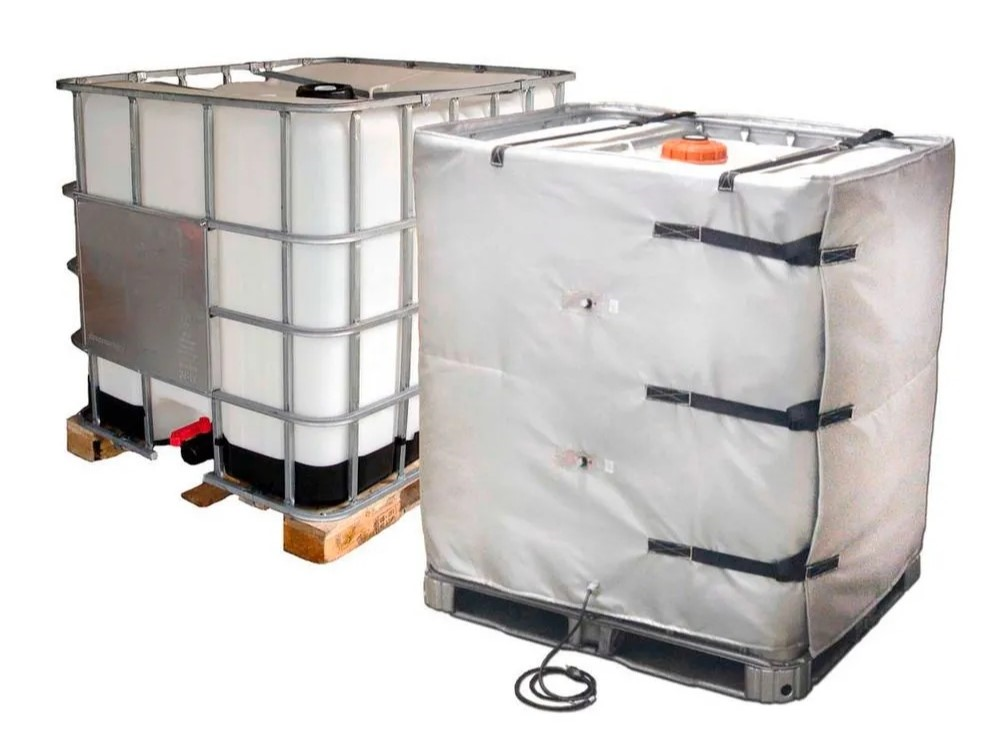 |
| DENIOS IBC Tote Heaters are ideal for use across many industries and applications where maintaining a specific temperature within large totes is essential. |
“Industries handling temperature-sensitive substances, such as those in outdoor storage or sensitive chemical processes, are increasingly turning to heating solutions to maintain materials at specified temperatures, prevent frost damage, and support quality assurance through controlled heat treatment,” Rodriguez notes.
Key factors driving these trends include an increased focus on temperature logistics and greater efficiency through utility cost reduction.
“Looking ahead, DENIOS is focused on driving technological innovation in heating solutions that can deliver both precision and energy efficiency,” Rodriguez says.
“We’re investing in advanced simulation technology to improve heat transfer with innovations like a hot air curtain that wraps around containers to provide uniform temperature control.”
Additionally, DENIOS is exploring real-time remote monitoring technology to enable users to maintain optimal heating levels remotely, ensuring maximum efficiency and reducing manual intervention.
“We anticipate these new technologies will become available in 2025, aligning with our commitment to providing state-of-the-art heating solutions for the industrial sector,” Rodriguez says.
LEARN MORE
- www.denios-us.com
- www.dovetailworkwear.com
- www.hultafors.us
- www.mechanix.com/us-en
- www.radians.com
- www.sunfireheaters.com
This article originally appeared in the December 2024/January 2025 issue of Contractor Supply magazine. Copyright, 2024/2025 Direct Business Media.
















